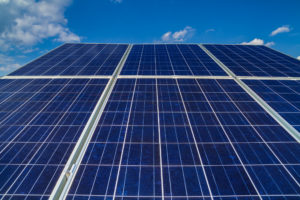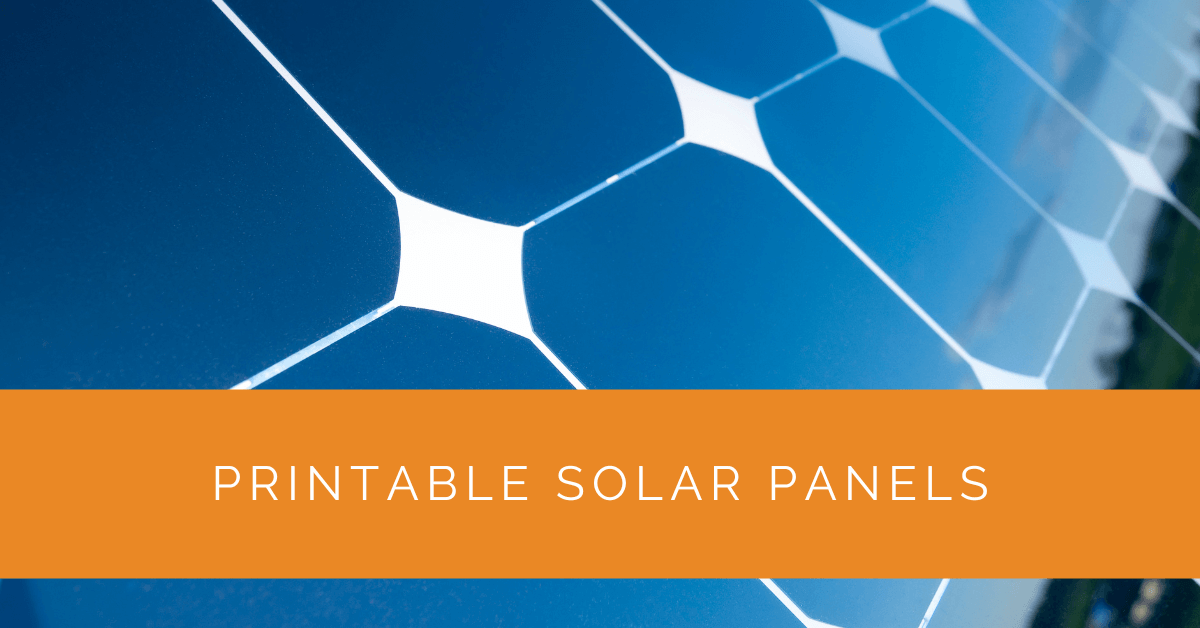In recent years, the development of printable solar panels has sparked significant interest and excitement within the solar industry. This groundbreaking technology has the potential to revolutionize solar energy production, offering new possibilities for flexible and lightweight solar modules. This article will delve into the world of printable solar panels, understanding their concept, manufacturing process, efficiency, commercial viability, and potential applications. Let’s explore the future of solar energy with printable solar panels.
Contents
- 1 Key Takeaways
- 2 Understanding Printable Solar Panels
- 3 The Printing Process
- 4 Efficiency and Performance
- 5 Commercial Viability and Implementation
- 6 Benefits and Limitations
- 7 Installation and Integration
- 8 Case Study: Revolutionizing Solar Energy with Printable Solar Panels
- 9 Expert Insights From Our Solar Panel Installers About Exploring Printable Solar Panels
- 10 Experience Solar Excellence with Us!
- 11 Conclusion
Key Takeaways
- Printable solar panels offer a flexible and lightweight alternative to traditional solar technologies, allowing for customization and integration into various surfaces and applications.
- While currently lower in efficiency compared to traditional solar cells, ongoing research and development efforts aim to improve the performance of printable solar panels and enhance their commercial viability.
- The future of printable solar technology holds promise for widespread adoption, with potential applications in construction, transportation, portable electronics, and remote areas, contributing to a greener and more sustainable future.
Understanding Printable Solar Panels
What Are Printable Solar Panels?
Printable solar panels, also known as printed solar cells, refer to a new class of solar technology that enables the printing of solar cells onto various surfaces. Unlike traditional silicon solar cells, printable solar cells are made from organic materials or inorganic thin films, allowing flexibility, lightweight design, and customization.
The Functioning of Printable Solar Cells
Printable solar cells operate on the principle of photovoltaic (PV) conversion. These cells consist of multiple layers of semiconducting materials that absorb sunlight and convert it into electrical energy. By leveraging inkjet or other printing techniques, solar cells can be precisely deposited onto substrates to form printable solar panels.
The Printing Process
The printing process plays a vital role in manufacturing printable solar panels. Various techniques are employed to deposit the active materials onto different surfaces, allowing for scalability and cost-effectiveness.
Printing Techniques for Solar Cells
Inkjet printing, screen printing, and roll-to-roll printing are common techniques for printing solar cells. Inkjet printing offers precise control over material deposition, enabling the creation of complex patterns and designs. On the other hand, screen printing allows for high-volume production, making it suitable for large-scale manufacturing. Roll-to-roll printing is well-suited for continuous production, enabling the fabrication of long sheets of solar cells.
Materials Used in Printable Solar Panels
Printable solar panels utilize different materials depending on the specific technology employed. Organic materials, such as conjugated polymers or small molecules, are commonly used for organic solar cells. Inorganic thin films, such as copper indium gallium selenide (CIGS) or cadmium telluride (CdTe), are used for inorganic printable solar cells. These materials offer flexibility, lightweight design, and the ability to print on various substrates.
Design Flexibility and Customization
One of the significant advantages of printable solar panels is their design flexibility. The printing process allows for creating of custom-shaped solar modules, making them suitable for a wide range of applications. Solar panels can be seamlessly integrated into various surfaces, including roofs, building facades, tents, portable devices, and clothing, opening up new possibilities for solar energy generation.

Efficiency and Performance
The efficiency and performance of printable solar panels are crucial factors for their widespread adoption. Although printable solar cells’ efficiency is generally lower than traditional silicon-based solar cells, significant progress has been made in recent years.
Challenges in Achieving High Efficiency
Printable solar cells face challenges in achieving high efficiency due to various factors. The choice of materials, device architecture, and interfacial properties significantly impact their performance. Research efforts are focused on improving efficiency by optimizing the materials, interfaces, and manufacturing processes.
Current Research and Development Efforts
Researchers and scientists worldwide are actively working to enhance the efficiency of printable solar cells. New materials, device architectures, and fabrication techniques are being explored to improve performance. Efforts are also directed towards developing hybrid systems, combining printable solar cells with other technologies to enhance efficiency.
Commercial Viability and Implementation
Printable solar panels’ commercial viability and successful implementation are critical for their widespread adoption and integration into various industries and applications.
Progress in Commercializing Printable Solar Panels
Significant progress has been made in commercializing printable solar panels. Companies and research institutions are investing in developing scalable manufacturing processes and improving the efficiency of printable solar cells. Australia, in particular, has emerged as a hub for printable solar technology research and commercialization.
Potential Applications and Industries
The potential applications of printable solar panels are vast and diverse. They can be integrated into various industries, including construction, architecture, transportation, remote and off-grid areas, portable electronics, and more. Printable solar panels offer a low-cost, lightweight solution for generating renewable energy in various settings.
The Future Outlook for Printable Solar Technology
As research and development in printable solar technology continue progressing, the future outlook for printable solar panels is promising. With ongoing advancements in efficiency, manufacturing processes, and material innovations, printable solar panels are expected to become increasingly efficient, cost-effective, and readily available.

Benefits and Limitations
Advantages of Printable Solar Panels
Printable solar panels offer several advantages over traditional solar technologies. Their lightweight and flexible design allows for easy integration into various surfaces, making them suitable for unconventional applications. They also present low-cost manufacturing and customization opportunities, providing design flexibility and scalability.
Environmental Benefits and Sustainability
Printable solar panels contribute to a greener and more sustainable future. Their production process typically requires less energy and generates fewer emissions than conventional silicon-based solar panels. Additionally, their lightweight nature reduces the environmental impact during transport and installation.
Limitations and Considerations
While printable solar panels show great promise, they do have some limitations. Printable solar cells’ current efficiency levels are lower than traditional solar technologies. Further research and development are needed to improve efficiency and address durability concerns. Additionally, printable solar panels’ lifespan and long-term performance under different environmental conditions require further evaluation.
Installation and Integration
Installing Printable Solar Panels
Installing printable solar panels follows similar principles to traditional solar panel installation. Using appropriate mounting systems, they can be mounted on rooftops, facades, or other surfaces. However, proper consideration should be given to printable solar panels’ specific requirements and limitations during installation.
Integration with Existing PV Systems
Printable solar panels can be integrated with existing photovoltaic (PV) systems, complementing traditional solar technologies. By combining different solar technologies, such as silicon-based solar panels and printable solar panels, a hybrid system can be created to optimize energy production.
Maintenance and Durability
Like any solar panel system, proper maintenance is crucial for the long-term performance of printable solar panels. Regular inspection, cleaning, and monitoring ensure optimal efficiency and identify potential issues. Durability considerations include protection against moisture, UV exposure, and mechanical stresses to maintain the integrity and longevity of printable solar panels.
Case Study: Revolutionizing Solar Energy with Printable Solar Panels
Background
Solar Panels Network USA has been dedicated to providing innovative solar solutions to meet the growing demand for renewable energy. In one of our most forward-thinking projects, we explored the implementation of printable solar panels to showcase their potential in diverse applications.
Project Overview
A tech company approached us with the goal of integrating solar power into their portable electronic devices. They required a lightweight, flexible solution that could be seamlessly incorporated into the design of their products without compromising aesthetics or functionality. Printable solar panels emerged as the ideal solution for this project.
Implementation
The project began with an in-depth analysis of the specific requirements for the portable devices. Our team collaborated closely with the tech company to understand their design and energy needs. This collaboration was essential to ensure the successful integration of the printable solar panels.
- Material Selection: We chose organic materials for the printable solar cells, known for their flexibility and lightweight properties. These materials were ideal for the portable devices’ form factors.
- Printing Process: We employed advanced inkjet printing techniques to deposit the solar cells onto the device surfaces. This method allowed precise control over the deposition process, ensuring optimal alignment and efficiency.
- Testing and Optimization: Extensive testing was conducted to assess the performance of the printable solar panels under various conditions. We optimized the device architecture and interfaces to enhance efficiency and durability.
Results
The implementation of printable solar panels in the portable devices was a resounding success. The devices now featured integrated solar cells that provided a reliable source of renewable energy. Key results included:
- Enhanced Portability: The lightweight nature of the printable solar panels did not add significant weight to the devices, maintaining their portability.
- Increased Energy Independence: The devices could now generate their own power, reducing dependency on external power sources and enhancing their usability in remote areas.
- Design Flexibility: The flexibility of the printable solar panels allowed for seamless integration into the devices, preserving their sleek and modern design.
Summary
This project demonstrated the transformative potential of printable solar panels. Their ability to be customized and integrated into various surfaces opens up new possibilities for solar energy applications. The success of this project highlighted the practical benefits of printable solar technology, such as enhanced portability, energy independence, and design flexibility.
At Solar Panels Network USA, we are committed to staying at the forefront of solar innovation. Our expertise and dedication to sustainable energy solutions enable us to tackle unique challenges and deliver cutting-edge solar installations. As printable solar technology continues to evolve, we look forward to exploring even more innovative applications and contributing to a greener future.
Expert Insights From Our Solar Panel Installers About Exploring Printable Solar Panels
As a senior solar installer, the potential of printable solar panels is truly exciting. Their lightweight and flexible nature allows for easy integration into unconventional surfaces, opening up new possibilities for solar energy generation in areas we hadn’t considered before.
Senior Solar Installer
Printable solar panels are a game-changer for portable electronics and remote areas. Their flexibility and ease of installation mean we can provide solar solutions where traditional panels simply wouldn’t fit.
Lead Solar Technician
The ongoing research and development in printable solar technology show promise for higher efficiency and wider applications. These innovations could lead to significant advancements in how we approach solar energy installations.
Chief Solar Engineer
Experience Solar Excellence with Us!
Trust in Solar Panels Network USA, where our seasoned experts deliver top-quality solar solutions for homes and businesses nationwide. With a legacy of countless successful installations and a commitment to sustainable energy, we’re your reliable partner in the solar journey. Ready for a brighter, eco-friendly future? Call us now at (855) 427-0058 and harness the power of the sun!
Conclusion
Printable solar panels offer a glimpse into the future of solar energy generation. With their lightweight design, flexibility, and customizable nature, they hold the potential to revolutionize the way we harness solar power. While still in the development phase, progress in efficiency, manufacturing processes, and commercial viability brings us closer to a future where printable solar panels play a significant role in achieving a sustainable and renewable energy landscape. As research and development efforts continue, printable solar panels are poised to contribute to a greener, more accessible solar energy future.
About the Author
Solar Panels Network USA stands at the forefront of solar energy solutions, driven by a team of seasoned solar engineers and energy consultants. With over decades of experience in delivering high-quality solar installations and maintenance, we are committed to promoting sustainable energy through customer-centric, tailored solutions. Our articles reflect this commitment, crafted collaboratively by experts to provide accurate, up-to-date insights into solar technology, ensuring our readers are well-informed and empowered in their solar energy decisions.

